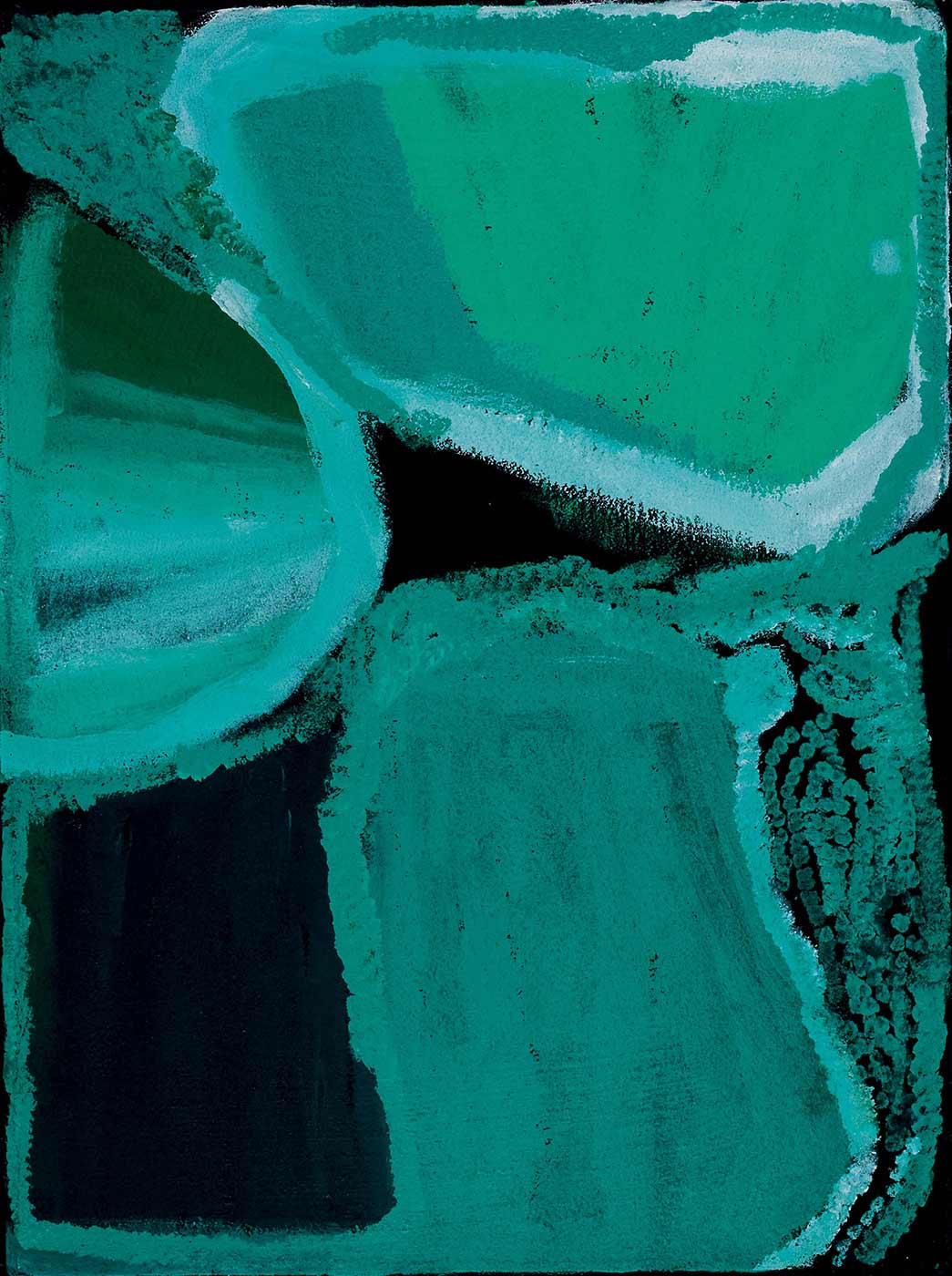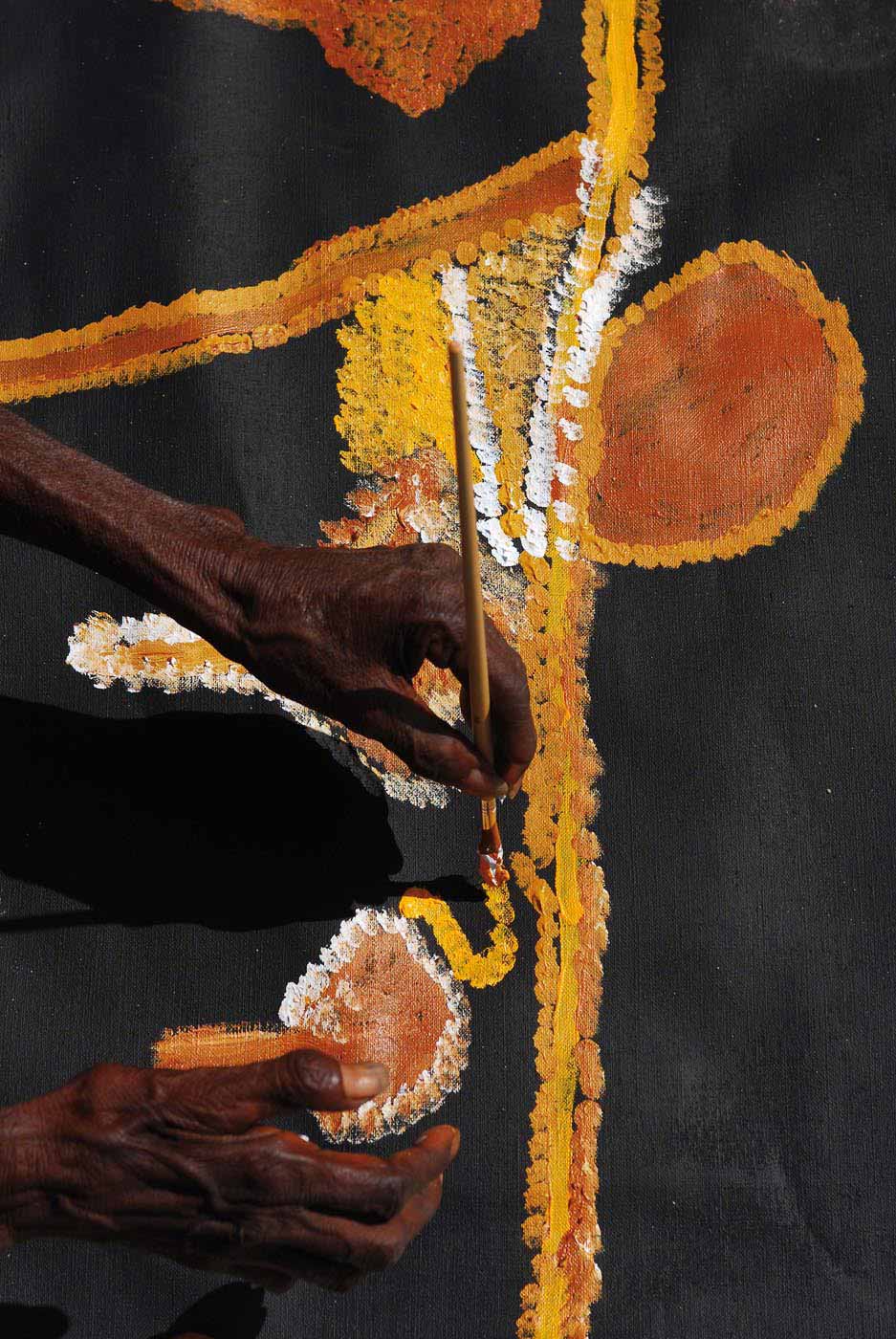Jarran Jan Billycan, Broome, 2007:
In living water there is a quiet snake. Sometimes he rises up, but we sing him down. Sometimes he can travel and bring rain.
Water was not only critical to desert people's physical survival, it was also central to their ceremonial practices and spiritual beliefs. The location of water sources defines Aboriginal people's Country.
The northern end of the Canning Stock Route crosses the Great Sandy Desert. Here springs are considered 'living' waters and are known as 'jila'. Some are inhabited by powerful ancestral beings.
Many of these jila are linked by Dreaming tracks that connect the Countries of Martu, Yulparija, Juwaliny, Mangala, Wangkajunga and Walmajarri people. The ancestral stories of these sites are recorded in the songs and dances that cross the desert, uniting peoples through shared ceremonies and law.
A number of these jila, including Kukapanyu (Well 39), Kulyayi (Well 42), Katajilkarr (Well 43) and Kaningarra (Well 48), became wells on the Canning Stock Route.

Kiriwirri (1 of 2) by Jan Billycan

Kiriwirri (2 of 2) by Jan Billycan

Kiriwirri by Jan Billycan

Kiriwirri by Nada Rawlins

Jilji by Taku Rosie Tarco

Nyilangkurr by Donald Moko

Tapu by Wakartu Cory Surprise

Tapu Country by Jukuna Mona Chuguna

Jila by Nyuju Stumpy Brown

Ngapawarla Jila by Nyuju Stumpy Brown

Kartamarti by Jukuja Dolly Snell

Jitirr by Jukuja Dolly Snell

Lawalawa by Ngarralja Tommy May

Kurrkumalu by Mayapu Elsie Thomas

Lampu, Kurninarra, Kartalapuru, Kujuwarri by Kuji Rosie Goodjie

Lipuru, Kukapanyu, Wajaparni by Kuji Rosie Goodjie

Nyilnigil by Nyangkarni Penny K-Lyons
Explore more on Yiwarra Kuju
